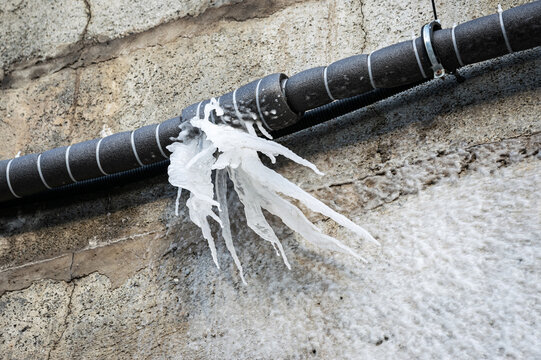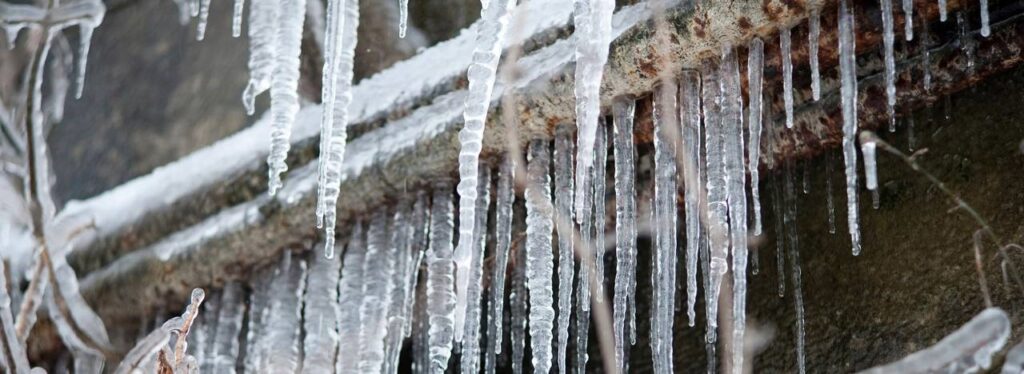Avoid Frozen Pipes in Winter: Professional Advice
Avoid Frozen Pipes in Winter: Professional Advice
Blog Article
Each person seems to have their private thinking when it comes to Winter Plumbing Precautions: Preventing Frozen Pipes.

Cold weather can wreak havoc on your pipes, particularly by freezing pipelines. Right here's how to stop it from taking place and what to do if it does.
Introduction
As temperature levels decrease, the danger of icy pipes rises, potentially causing costly repair work and water damages. Recognizing just how to stop frozen pipes is crucial for homeowners in chilly environments.
Comprehending Frozen Pipes
What causes pipes to freeze?
Pipes freeze when subjected to temperature levels below 32 ° F (0 ° C) for prolonged durations. As water inside the pipelines ices up, it broadens, taxing the pipe wall surfaces and potentially causing them to burst.
Threats and damages
Icy pipelines can bring about water supply disturbances, residential property damages, and expensive repair work. Ruptured pipelines can flood homes and trigger extensive structural damage.
Indications of Frozen Piping
Determining frozen pipelines early can stop them from breaking.
Just how to determine icy pipelines
Seek reduced water circulation from faucets, uncommon odors or sounds from pipes, and visible frost on exposed pipes.
Prevention Tips
Shielding vulnerable pipelines
Wrap pipelines in insulation sleeves or make use of heat tape to shield them from freezing temperature levels. Concentrate on pipelines in unheated or exterior areas of the home.
Home heating strategies
Maintain interior spaces effectively heated up, specifically locations with pipes. Open up closet doors to permit cozy air to flow around pipelines under sinks.
Shielding Exterior Pipes
Garden hose pipes and outside taps
Disconnect and drain garden pipes prior to winter. Mount frost-proof spigots or cover outside taps with insulated caps.
What to Do If Your Pipes Freeze
Immediate actions to take
If you believe icy pipelines, maintain taps open up to eliminate stress as the ice melts. Utilize a hairdryer or towels soaked in hot water to thaw pipes slowly.
Long-Term Solutions
Architectural adjustments
Take into consideration rerouting pipelines far from outside walls or unheated areas. Include extra insulation to attic rooms, basements, and crawl spaces.
Updating insulation
Invest in high-quality insulation for pipes, attic rooms, and wall surfaces. Appropriate insulation helps maintain regular temperature levels and decreases the danger of frozen pipes.
Final thought
Stopping frozen pipes needs proactive steps and quick reactions. By recognizing the reasons, indicators, and safety nets, home owners can shield their plumbing throughout cold weather.
5 Ways to Prevent Frozen Pipes
Drain Outdoor Faucets and Disconnect Hoses
First, close the shut-off valve that controls the flow of water in the pipe to your outdoor faucet. Then, head outside to disconnect and drain your hose and open the outdoor faucet to allow the water to completely drain out of the line. Turn off the faucet when done. Finally, head back to the shut-off valve and drain the remaining water inside the pipe into a bucket or container. Additionally, if you have a home irrigation system, you should consider hiring an expert to clear the system of water each year.
Insulate Pipes
One of the best and most cost-effective methods for preventing frozen water pipes is to wrap your pipes with insulation. This is especially important for areas in your home that aren’t exposed to heat, such as an attic. We suggest using foam sleeves, which can typically be found at your local hardware store.
Keep Heat Running at 65
Your pipes are located inside your walls, and the temperature there is much colder than the rest of the house. To prevent your pipes from freezing, The Insurance Information Institute suggests that you keep your home heated to at least 65 degrees, even when traveling. You may want to invest in smart devices that can keep an eye on the temperature in your home while you’re away.
Leave Water Dripping
Moving water — even a small trickle — can prevent ice from forming inside your pipes. When freezing temps are imminent, start a drip of water from all faucets that serve exposed pipes. Leaving a few faucets running will also help relieve pressure inside the pipes and help prevent a rupture if the water inside freezes.
Open Cupboard Doors
Warm your kitchen and bathroom pipes by opening cupboards and vanities. You should also leave your interior doors ajar to help warm air circulate evenly throughout your home.

As a fervent person who reads on Winter Plumbing Precautions: Preventing Frozen Pipes, I think sharing that piece of content was a great idea. Enjoyed reading our blog? Please quickly share it. Help other people discover it. Thanks a lot for taking the time to read it.
Visit Page Report this page